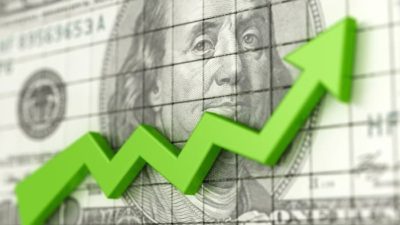This article was originally published on Fool.com. All figures quoted in US dollars unless otherwise stated.
Amazon (NASDAQ: AMZN) has been the e-commerce king for more than two decades because it's been able to put together a simple shopping solution with a nearly unlimited variety of products. And no retailer, brick-and-mortar or online, was able to keep up with this incredible growth stock. The shopping dynamic has changed in the last few years with the growth of Shopify (NYSE: SHOP), Square (NYSE: SQ), and even Etsy (NASDAQ: ETSY). But the biggest threat I see to Amazon long-term is Alphabet (NASDAQ: GOOG) (NASDAQ: GOOGL) subsidiary Google getting its act together in shopping. Here's why it's Google that could create the biggest challenge for Amazon.Google takes shopping seriously
Google has long had a shopping tab in its search bar and sometimes shows shopping results on top of links, but shopping hasn't been key to the company's business. That may be changing, since Google as a company wants to provide answers to users' queries, not just blue links that take people off its website. This is why snippets are shown after many searches and the company is developing tools to answer people's questions within Google. Since Google is one of the most likely options for initial shopping inquiries, it has an incentive to serve customers exactly what they are shopping for. Through recent partnerships with Shopify and Square, it's doing that on its website. Sellers on Shopify and Square can use the Google Merchant Center to promote products in Google and even sell on Google's site with their Shopify or Square back end. Google is the top of the shopping funnel, directing users to the most relevant products, even if it's matching extremely niche buyers and sellers. This is a change to how Google has long treated shopping searches. Google used to be a funnel to Amazon with Amazon ads often lining nearly every search. That helped Amazon become the go-to location for shoppers, especially with Prime shipping, and effectively cut Google out of the equation as shoppers started using Amazon as their initial search tool. But the explosion of small shops and niche product combined with Amazon's continued squeeze of third-party sellers has opened up an opportunity for a new selling ecosystem. Buyers who aren't stuck within the Amazon ecosystem are now looking for diverse and niche products on the internet, and what better place to look than Google?Google pulls apart Amazon's integration
The last 20 years at Amazon were all about integrating the shopping experience in the name of consumer convenience. Amazon started by owning the website and the warehouse, but now it owns planes and trucks and payment processing and even computer servers around the world. As it grew, it pulled third-party sellers into the equation, allowing them to sell their products on the Amazon platform; this was a win for sellers who weren't reaching customers in other ways online. But in recent years Amazon has started to squeeze third-party sellers. There are fees for handling products and other services, of course, but Amazon is also finding ways to charge more for advertising to reach customers within the Amazon platform. Most customer searches on Amazon's website or app will likely be led with sponsored ads, which retailers have to pay for. Amazon Unbound author Brad Stone called this "pay-to-play" against Amazon's own brands in an interview with Ben Thompson on Stratechery recently. This addition of advertising revenue has made Amazon more profitable, but it has to leave third-party sellers in a tough spot with a choice to eat the cost, raise prices to maintain margins, or look for another platform. Google, Shopify, and Square are trying to attract sellers who want an option other than living within Amazon's ecosystem. And by using this network of companies, retailers and produce makers can sell directly to consumers -- collecting information like names, emails, and addresses, and building a long-term relationship that includes marketing new products to highly qualified customers. Amazon built an integrated ecosystem where it was the platform, search tool, payment platform, warehouse, shipper, and more for third-party retailers. Google's strategy to upend Amazon is pulling that integration apart. The game-changer in this disruption, in my opinion, is the proliferation of simplified checkout options from Apple (NASDAQ: AAPL), Shopify, Square, and Paypal (NASDAQ: PYPL). Like Amazon, they save your shipping address and credit card information so that checkout can be a breeze, but they still allow the retailer to collect valuable customer information. As this stack of services grows and improves, it's a formidable threat to Amazon's retail business.Amazon's biggest advantage
What Amazon still has going for it is Prime and the inherent momentum in the market. Prime and all of its ancillary benefits have the effect of locking consumers into the Amazon ecosystem because they pay upfront for "free" shipping, so customers might as well keep shopping on Amazon. Momentum can be equally important because shoppers typically stay with their preferred shopping method for a period of time, even if there are cheaper, faster, or better shopping options available. Amazon could simply ride the momentum to growth for the next decade, but I think it's clear Google and its partners are going to take market share.The future of retail
Amazon had a big head start in e-commerce, but online shopping has begun to change once again as it's become easier and easier to build an online store, check out quickly and securely, and market to a niche audience of customers. Services that Shopify, Apple, Square, and others have brought to the market have made this transformation from integrated e-commerce to a more disparate model possible. The key piece of this disruption of Amazon could be Google's role as a place of discovery for shoppers. Shopify and Square aren't built to be discovery tools, so companies need to find ways to reach qualified customers. Who better to make that match than Google? If the strategy works and Google becomes the first place people go to when shopping, it could have a chance to threaten Amazon's dominance of e-commerce long-term.This article was originally published on Fool.com. All figures quoted in US dollars unless otherwise stated.









